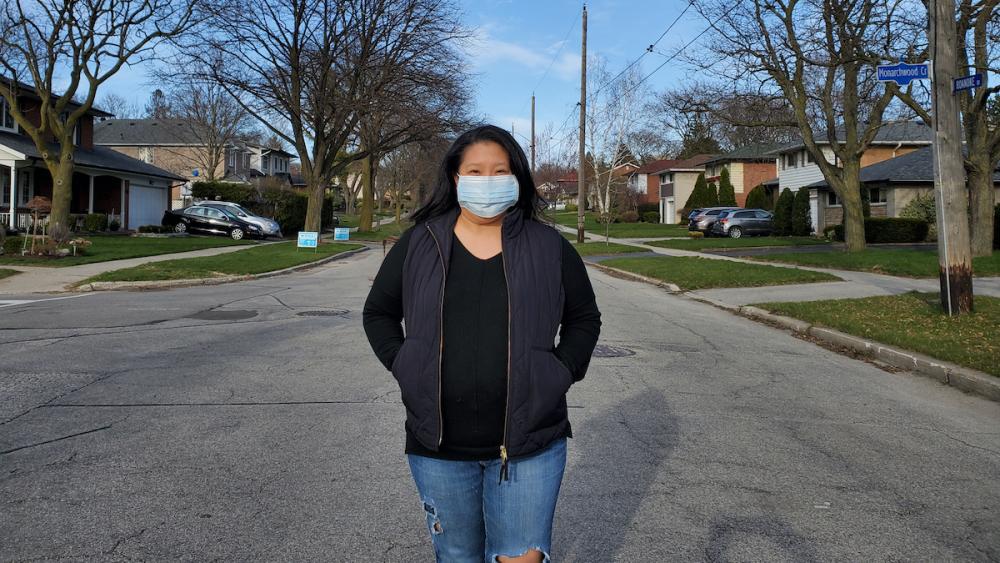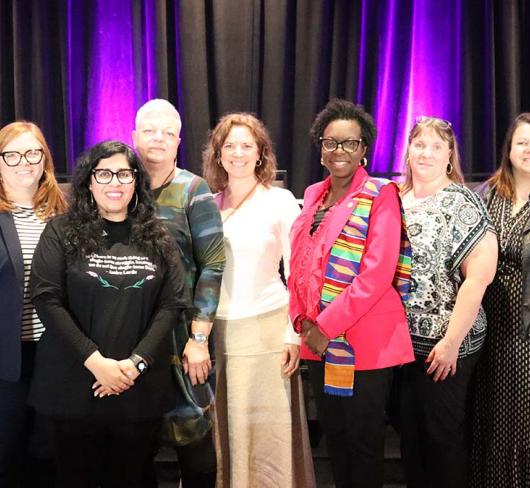
Creating a New Normal: Feminist Lessons from COVID-19
These days, I find I am constantly distracted. Teaching my grade 7/8 students from isolation, I am pulled in different directions. I’m trying to tend to my children and their needs, while listening to a virtual staff meeting, all while attempting to remember the “must haves” on the grocery list and wondering if we have masks and sanitizer for shopping. The mental load is heavy. The staff meeting is complete, the kids are napping and, at 2:30 pm, I sit down to create a distance learning plan for my students. I, of course, consider where we left off, what resources I have, who I need to collaborate with, and then I pause. I pause because I wonder how my students and their families are coping. How is Taylor* able to handle learning online when she stays in during recess most days to get the one-on-one teacher instruction she requires to be successful? I wonder how Jordan is managing being isolated from his friends when he often tells me his friends are his family? I know I should be working on my distance learning plan, but I am distracted because I can’t help but think about the impact this pandemic is having on the various communities I am part of and other communities across the province. How many students have a device they can use to access distance learning set up by their teacher? If they have a computer, is this the same computer shared with siblings or their parents who are now working from home? Do all families have access to the internet? What is happening with Devon? She comes from a single-parent home. Her mom works in healthcare and we normally schedule phone calls around her shift work for progress updates… how is she feeling?
Classrooms are microcosms of our communities. In the communities I have worked in, I have seen families struggle with mental health concerns, custody issues, behaviour issues, food insecurity along with the financial difficulties that come with the high cost of living in the GTA. Mental health awareness is shifting from a topic I sometimes touched upon in my classroom to one that is part of my daily teaching practice now. A large part of my role as an intermediate teacher is working with adolescent students to help them understand the highs and lows of their emotions and provide strategies to support them through their anxiety. Without the physical structure and routine of school, the anxiety levels of many students are on the rise. The world is changing, both locally and globally, right before their eyes, and the many supports they once had to acclimatize and manage flexibility are no longer available to them. I actively remind myself and my students to take deep breaths… take a break when our minds are spinning… when the news is overwhelming… when a video call cannot replace seeing someone in person.
Food insecurity, job insecurity, reduced access to social programs all contribute to the increased stress we are experiencing. COVID-19 is exposing flaws in our health, social and economic systems and putting people who are already marginalized at even greater risk. Anyone who needs access to social programs is facing these challenges with less support than before. Those who face food and housing insecurity are having more difficulty accessing services and finding shelter. Non-medical front-line workers are exposing themselves to this virus for the same low wages, lack of benefits and little personal protective equipment.
Feminist Perspectives on Systemic Change
Even in these early days of understanding the impacts of COVID-19, feminist organizations have identified the disproportionate impacts of this pandemic on women and other vulnerable groups. The duality of this pandemic is in exposing disparities that already exist in our communities while also creating the space and opportunities to do things differently as we transition into whatever becomes our new normal. Evolving circumstances are changing the world as we know it and highlighting the intersections that put the most vulnerable people in our communities at greatest risk during a crisis. An unfortunate reality is that, depending on identity and social location, people’s health outcomes are different. Critical factors such as gender, age, geography, ability, race/ethnicity and Indigeneity, migration/refugee status, class and other structural conditions, including precarious housing and employment and political and environmental stressors all play a role (see “Beyond Health and Gender Analysis: An Intersectional View of the COVID-19 Pandemic Outbreak and Response,” by Olena Hankivsky and Anuj Kapilashrami).
Educators and others have been organizing with healthcare workers, labour rights activists and associated groups to push for long-term changes to labour laws and protections for all front-line workers. Sustaining these connections is important as we move forward into the post-pandemic future.
Everything is Possible
The government’s decision to close schools and shut down non-essential businesses felt like an abrupt but absolute necessity. At the time of this writing, it remains uncertain how long we will stay in isolation and, for many people and small businesses, waiting this out is not an option. Both the federal and provincial governments have recognized the position we are all in and have responded in noteworthy ways. They have put unprecedented measures in place to keep the majority safe and at home. The release of billions of dollars created the Canadian Emergency Relief Benefit and other Federal and Provincial programs to support a broad cross-section of people affected by COVID-19. When we eventually acclimatize to our new normal after the pandemic, I hope we will all fight to protect both this worldview, which prioritizes our social safety nets, public services and communities, and the new infrastructure that has been created.
The pandemic has emphasized the gaps in our systems, but what feels different during this global crisis is that the relief effort is collective and prioritizes people. Ideas that we believed to be radical pre-pandemic are now feasible, if not already in action. Anything is possible! Governments are using all means at their disposal to help Canadians through this challenge. Businesses are re-tooling manufacturing to produce personal protective equipment. Neighbours are checking in on each other and offering help or accepting help while groups like 15 and Fairness continue to push for fair wages, paid sick days and decent working conditions for all Ontarians.
Bringing the Lessons from COVID-19 to the Classroom
Teachers are educators, but we are also mentors, counsellors, coaches, mediators and cheerleaders. We have an opportunity here to imagine how we can transform everything about the way we live to prioritize our communities, our public services, our environment and our social safety nets. Recognizing the intersectional ways in which people are impacted by a crisis is forcing us to reconsider the systems that currently exist. COVID-19 is teaching us empathy, that this is not an us versus them or left versus right nor is it a public versus private fight. This is life versus death and the only way to save lives is through a collective effort that has taking care of everyone at its centre. We need to reevaluate the systems that exist and how they can be rebuilt so that everyone is considered and supported. This crisis in an opportunity to empower our students and to help foster critical global citizens.
Though uninvited, this pandemic has created a multi-generational shared experience. Let’s shift from an individual focus to one that includes the global community and harness opportunities to change the trajectory of our students’ future. Teaching students the value of a society that is built on equity and access, the importance of allyship and the possibility of changing our future for the better is critical in this moment. There are endless examples of the benefits of collective and community action. The collective effort in response to COVID-19 is reactive, but imagine what we could accomplish with a proactive approach to protecting our future and ensuring that the new normal means a society built on care and equity. Our responsibility as teachers is to continue the conversation and promote thinking holistically. Now more than ever, we need our students to be hopeful critical thinkers, strong allies and powerful advocates. Our students will be the caretakers of the earth and the decision-makers of what our future holds.
*All names of students have been changed.
Catherine Oikawa is a member of the Durham Teacher Local.
Key Lessons for the New Normal
- All students need equitable access to the internet and necessary tools/devices to access different learning platforms.
- Everyone from grocery clerks and delivery drivers to doctors and personal support workers are essential.
- Everyone is entitled to decent wages, benefits, paid sick days and other labour protections.
- Equity, giving some people advantages to bring them to the same starting point as others, is an essential component of a healthy society.
- Investment in our social programs, our public services and the needs of our communities benefits everyone.
- Prioritizing investment in healthcare and healthcare workers and ensuring our healthcare system is well funded saves lives.
- It is possible to radically change how we live. We have just seen a global example of this. When governments say that significantly prioritizing the need of the earth or its people is not possible, we know otherwise.
- Investment can easily be prioritized to meet the needs of people, public services and the environment before the needs of the market. Don’t let anyone tell you otherwise.
- It takes a village. We can transform our communities locally by focussing on what each of us needs and can contribute.
- Anything is possible! We can all work on identifying inequality and using our privilege to influence change.

